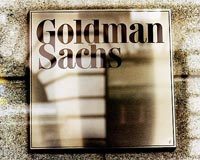In the dark over rights of light
Has the City of London Corporation lost its stomach for intervention in rights of light disputes?
In 2011 it waded in on an argument between Land Securities and neighbouring landlords over the development of the Walkie Talkie at 20 Fenchurch Street, EC3, invoking section 237 of the Planning Act and forcing any rights of light settlement to be based on the loss of value for an affected property, rather than on a much more lucrative profit-share basis.
Goldman Sachs was expecting the same treatment on its Fleet Building and Plumtree Court, EC4, where it plans to create an £800m campus.
Has the City of London Corporation lost its stomach for intervention in rights of light disputes?
In 2011 it waded in on an argument between Land Securities and neighbouring landlords over the development of the Walkie Talkie at 20 Fenchurch Street, EC3, invoking section 237 of the Planning Act and forcing any rights of light settlement to be based on the loss of value for an affected property, rather than on a much more lucrative profit-share basis.
Goldman Sachs was expecting the same treatment on its Fleet Building and Plumtree Court, EC4, where it plans to create an £800m campus.
Neighbouring landlords Aberdeen and Royal London wanted compensation for their loss of light to be based on a profit share. Goldman, unsurprisingly, did not.
Initially it looked like the City was going to wade in again, with planning officer Annie Hampson recommending in September that the Corporation use section 237 to facilitate the development of the Fleet Building and Plumtree Court.
But after officers recommended members vote to use the powers, the Corporation appeared to rein back, deferring a decision on the matter at both September’s and October’s planning meetings.
Officially the decision was deferred first because members had insufficient time to digest the details of the initial report outlining the case and then because negotiations between the parties had recommenced. But speaking privately, some developers fear there may be more to it.
Aberdeen and Royal London had been willing to take legal action if the committee voted in favour of using section 237, knowing that recent rulings would support their demands for a profit share and there was little appetite for a public bust-up between the City Corporation, a US investment bank, and two major UK institutions.
Goldman had already upped its offer once to meet the City’s independent estimated value of £1.2m each for Aberdeen’s and Royal London’s loss of light before the threat of section 237 emerged.
It appears to have agreed to get back around the table after the decision to invoke section 237 was deferred.
While that is exactly what the City Corporation wanted – it uses the powers as a matter of last resort, according to City surveyor Peter Bennett – critics fear it is a sign the Corporation has lost its willingness to support development.
If that is the case, then what has changed and what does this mean for upcoming schemes?
The planning and transport committee has new members following elections earlier this year and it is still adapting to life after the retirement of long-serving planning officer Peter Rees.
For one committee member who did not wish to be named, the result of this change and Hampson’s “democratic style” is a more “independently minded” committee that won’t necessarily follow officers’ recommendations.
By contrast, in the year before Rees departed, every planning matter he recommended members approve went through.
But Bennett disputes the notion there has been any change in the City’s approach.
Instead he says the fact the parties got back around the negotiating table vindicates the City’s strategy to threaten to use 237.
“I think both parties knew the Corporation was watching and that they had to act reasonably and that is quite a sobering thought for both of them,” he says.
“It is the threat of the powers that is more important than the actuality,” he adds.
It is not possible – as Bennett points out – to truly assess the committee’s appetite for the fight in this case, given that it never actually came to a vote.
Nor will the final figure, which was agreed this week between Goldman and the fund managers, ever be disclosed.
But this further uncertainty in the already uncertain world of rights of light disputes, will only add to developers’ unease around this fiendishly complex area of the law.
As Helical Bar development director Gerald Kaye puts it: “There is a great deal of uncertainty around rights of light and clear need for reform.”
There is a string of other major developments in the Square Mile that have outstanding rights of light issues to be resolved, such as TIAA-Henderson’s massive redevelopment of Leadenhall Triangle, dubbed Gotham City.
If any of those developers were assuming the Corporation would be guaranteed to intervene in the face of rights of light difficulties, the Goldman case may have them reconsidering.
jack.sidders@estatesgazette.com











